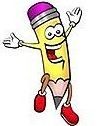Continuing to build on the first two literacy stages, children are now at the age where they attend kindergarten at least half a school day (however, many schools are now opting to implement full-day classes). Despite having a curriculum to guide their literacy now, it is still important for parents to continue to nurture their literacy development outside of school.
The list below highlights some of the new developments that a parent can expect to see by the time their child finishes kindergarten. Note: Children vary in how they develop and learn – some skills should develop in the next literacy stage in they are not achieved at this stage.
Most 5 year olds should be able to:
Reading
- demonstrate familiarity with many different types/genres of text (e.g. storybooks, poems, traffic signs, environmental print like cereal boxes)
- sound like s/he are reading or pretending to read
- enjoy being read to; retelling stories
- know parts of a book and their functions
- make predictions based on portions of the stories or their illustrations
- answer questions about stories that have been read aloud
- connect events and information in stories to her/his own life experiences
- track words with a finger when listening to a story being read or when rereading his/her own writing
Writing
- use descriptive language to explain something or to ask questions
- understand that print is read from top-to-bottom and left-to-right
- begin to write stories with some readable parts
- notice when simple sentences do not make sense
- can create and name most uppercase and lowercase letters on her/his own
- write (unconventionally) to express his/her own meaning
- distinguish the difference between “kid writing” and conventional writing
Spelling
- make a connection between written and spoken words
- print letters of the alphabet and some words that are used often
- recognize some words by sight (including common words like “a, the, I, my, you, is”)
- use phonemic awareness and letter knowledge to spell words on her/his own (also known as invented or creative spelling)
- begin building a collection of commonly spelled words
- print their first and last name as well as the names of his/her friends
- write out some dictated words (i.e. spelling tests)
Phonics
- recognize letters and the sounds s/he make
- rhyme words and identify beginning sounds
- understand the connection between the sequence of letters in a written word and the sequence of sounds when spoken
- demonstrate an understanding that spoken words consist of a sequence of phonemes (units of sound)
- identify whether the sounds in a spoken set (e.g. “log, log, leg”) are the same or different
- merge two or more sound blends into a meaningful word
- produce a word that rhymes with the given spoken word
Speaking / Listening
- use newly learned words and grammar rules in his/her own speech
- retell or dramatize stories (or parts of stories)
- listen attentively to the teacher reading books aloud
